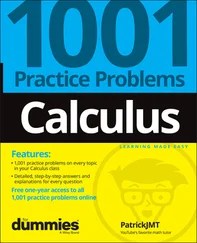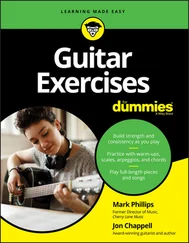7 Part 5: Gearing Up: Outfitting Your Arsenal Chapter 14: Shop Till You Drop: Buying the Right Guitar for You Before You Begin Shopping Deciding On a Make and Model Evaluating a Guitar Welcome to the Jungle: Shopping Protecting Your Guitar Chapter 15: Choosing Your Amp and Effects Getting Started with a Practice Amp Powering Up to a Larger Amp Dissecting the Amplifier What’s That Sound? Checking Out Your Amp Choices Remembering the Good Old Days Dialing in an Amp Sound Chronicling Classic Amps for Blues Messing Around with Your Sound: Effects Juicing Up Your Sound Toying with Tone Quality Modulation Effects, from Swooshy to Swirly Pretending (and Sounding Like) You’re Somewhere You’re Not Choosing an Effects Format Chapter 16: Changing Strings Change Is Good, But When? Choosing the Right Strings Outfitting Your String-Changing Toolkit Removing Old Strings Stringing a Steel-String Acoustic Stringing an Electric Guitar
8 Part 6: The Part of Tens Chapter 17: Ten Blues Guitar Giants Robert Johnson (1911–38) Elmore James (1918–63) T-Bone Walker (1910–75) Muddy Waters (1915–83) Albert King (1923–92) B.B. King (b. 1925) Albert Collins (1932–93) Otis Rush (b. 1934) Eric Clapton (b. 1945) Stevie Ray Vaughan (1954–90) Chapter 18: Ten Great Blues Guitars Gibson L-1 Flattop Gibson ES-175 Archtop National Steel Gibson J-200 Fender Telecaster Gibson Les Paul Fender Stratocaster Gibson ES-335 Gibson ES-355 Gibson SG Chapter 19: Ten (Plus One) Must-Have Blues Guitar Albums Robert Johnson: The Complete Recordings Blues Masters: The Very Best of Lightnin’ Hopkins T-Bone Walker: Complete Capitol Black & White Recordings T-Bone Walker: Complete Imperial Recordings The Best of Muddy Waters B.B. King: Live at the Regal The Very Best of Buddy Guy Robert Cray: Bad Influence Masters of the Delta Blues: Friends of Charlie Patton Mean Old World: The Blues from 1940 to 1994 Chicago: The Blues Today
9 Part 7: Appendixes Appendix A: How to Read Music The Elements of Music Notation Appendix B: How to Use the Website Relating the Text to the Website System Requirements What You’ll Find on the Website Troubleshooting
10 Index
11 About the Author
12 Connect with Dummies
13 End User License Agreement
1 Chapter 5TABLE 5-1 Blues Songs by Groove
2 Chapter 6TABLE 6-1 The I, IV, and V Chords in Common Blues Keys
3 Chapter 8TABLE 8-1 Comparing the Major and Minor Pentatonic Scales
4 Chapter 10TABLE 10-1 Dynamics Symbols and Their Meanings
5 Chapter 11TABLE 11-1 The Songs of Robert Johnson
6 Chapter 16TABLE 16-1 Common Acoustic-Guitar String Sets by GaugeTABLE 16-2 Common Electric-Guitar String Sets by Gauge
7 Chapter 20TABLE A-1 Pitch Symbols and Their MeaningsTABLE A-2 Duration Symbols and Their MeaningsTABLE A-3 Expression, Articulation, and Miscellaneous Symbols
1 Chapter 1FIGURE 1-1: The Fender Stratocaster and the Gibson Les Paul.
2 Chapter 2FIGURE 2-1: The C major scale with blue notes.FIGURE 2-2: The 6-note blues scale and 5-note minor pentatonic scale.FIGURE 2-3: A typical acoustic guitar with its major parts labeled.FIGURE 2-4: A typical electric guitar with its major parts labeled.FIGURE 2-5: The makers of electric sound, reporting for duty.FIGURE 2-6: A left-hand string bend stretches the string, causing it to rise in...
3 Chapter 3FIGURE 3-1: The correct position for creating notes and chords.FIGURE 3-2: The right hand crosses the strings for picking, strumming, and fing...FIGURE 3-3: Using a thumbpick increases the power from the right-hand thumb.FIGURE 3-4: The correct way to hold a pick.FIGURE 3-5: With fingers curved and knuckles bent, the left hand fingers the E ...FIGURE 3-6: A chord diagram with its parts labeled.FIGURE 3-7: One bar of an E chord with rhythm slashes.FIGURE 3-8: Three examples of guitar tablature, with the parts labeled.
4 Chapter 4FIGURE 4-1: Twenty open-position chords for playing most blues songs.FIGURE 4-2: Forming an F barre chord.FIGURE 4-3: Five common major barre chords are found in the blues.FIGURE 4-4: The C7 moveable form at the fifth fret creates an E7 chord.FIGURE 4-5: Four qualities of E-based forms.FIGURE 4-6: A progression using the minor, dominant 7, minor 7, and 7 suspended...FIGURE 4-7: A B♭ chord at the first fret uses the A form.FIGURE 4-8: The alternate, double-barre fingering for the A-form barre chord.FIGURE 4-9: A progression that uses only A-form barre chords.FIGURE 4-10: A progression using the A-form minor 7, dominant 7, and 7 suspende...FIGURE 4-11: Combining A- and E-form barre chords in a progression.FIGURE 4-12: The E- and A-form power chords.
5 Chapter 5FIGURE 5-1: Strumming an E chord in quarter notes for two bars.FIGURE 5-2: Playing eighth-note and quarter-note strums in downstrokes.FIGURE 5-3: A strumming passage in quarter and eighth notes, using downstrokes ...FIGURE 5-4: A bass-and-chord pick-strum pattern for country blues.FIGURE 5-5: A two-beat, or cut shuffle, feel alternates bass notes with the cho...FIGURE 5-6: A pick-strum pattern in a slow 12/8 feel.FIGURE 5-7: A chart of dots, ties, rests and common syncopation figures.FIGURE 5-8: A straight-eighth progression in A that uses common syncopation fig...FIGURE 5-9: A shuffle in A that uses common syncopation figures.FIGURE 5-10: A strumming pattern that employs left-hand muting to simulate sync...FIGURE 5-11: A rhythm figure with palm mutes and accents.FIGURE 5-12: Fingerstyle blues with a quarter-note bass.FIGURE 5-13: The shuffle feel is the most common groove in the blues.FIGURE 5-14: The straight-four feel is used for a more-driving, rock-based soun...FIGURE 5-15: The 12/8 feel is used for slow-tempo blues.FIGURE 5-16: The two-beat feel is for more lively blues.FIGURE 5-17: The 16 feel is used for funky-sounding blues grooves.
6 Chapter 6FIGURE 6-1: The 12-bar blues using Roman numerals to represent chords in a key.FIGURE 6-2: The 12-bar blues in E.FIGURE 6-3: The quick-four change in bar two, in E blues.FIGURE 6-4: The turnaround can be a V chord substituting for I in the last bar.FIGURE 6-5: A slow blues in 12/8 with added chords.FIGURE 6-6: An 8-bar blues that uses various chords.FIGURE 6-7: A straight-four progression with a variation.FIGURE 6-8: The Jimmy Reed move in E.FIGURE 6-9: The Jimmy Reed move in G.FIGURE 6-10: The Jimmy Reed move in A.FIGURE 6-11: A minor blues progression that uses minor-seventh chords.FIGURE 6-12: A simple two-bar intro.FIGURE 6-13: A four-bar intro.FIGURE 6-14: A two-bar turnaround.FIGURE 6-15: A two-bar turnaround with chord changes every two beats.FIGURE 6-16: A two-bar turnaround with chromatic movement.FIGURE 6-17: A typical ending for a slow blues.FIGURE 6-18: A two-bar turnaround in a shuffle feel.FIGURE 6-19: Two added chords in E7.FIGURE 6-20: Two added chords in A7.FIGURE 6-21: The B7 move.FIGURE 6-22: High moves in a 12-bar blues in E.
7 Chapter 7FIGURE 7-1: A boogie bassline in quarter notes.FIGURE 7-2: A boogie bassline with double-struck eighth notes.FIGURE 7-3: A stop-time riff in eighth notes.FIGURE 7-4: An eighth-note riff in the style of Freddie King’s “Hide Away.”FIGURE 7-5: A 16th-note riff, using alternate picking.FIGURE 7-6: An eighth-note riff featuring common syncopation figures.FIGURE 7-7: An expanded version of the classic 5-6 move in straight eighths.FIGURE 7-8: A variation of the 5-6 move in swing eighths.FIGURE 7-9: An expanded version of the classic 5-6 move.FIGURE 7-10: A progression fusing chords, single notes, and doublestops.FIGURE 7-11: The quick-four move over open-position E and A chords.FIGURE 7-12: A triplet-based intro riff in E.FIGURE 7-13: A double-stop intro riff in E.FIGURE 7-14: A melodic intro riff based in all triplet eighth-notes.FIGURE 7-15: A descending double-stop turnaround riff in A in the style of Robe...FIGURE 7-16: A turnaround riff in E featuring contrary motion.FIGURE 7-17: A turnaround riff in C with gospel flavor.FIGURE 7-18: A triplet-based ending riff.FIGURE 7-19: A low-note ending riff in E, using triplets and double-stops.FIGURE 7-20: A triplet-based riff featuring sixths.FIGURE 7-21: A rhythm groove over a 12-bar blues in E.
Читать дальше












